Hello ladies and gentlemen, Muldoon here with a pretty cool edition of MEET THE CREW. This week, talented Storyboard Artist Jeff Errico sits down and gives us a little insight into his world. He goes pretty in depth with each question and even was kind enough to provide us some neat eye candy. Jeff's worked on quite a few blockbusters you folks might have seen in past years - CRANK, 22 JUMP STREET, THIS IS THE END, and the upcoming TERMINATOR GENISYS, FANTASTIC FOUR, and the NWA biopic STRAIGHT OUTTA COMPTON. The guy's a genuine talent who's quickly becoming one of Hollywood's "Go To" guys, so it really is pretty cool of him to take the time to drop some knowledge on us movie fans.
In case you're new to this column and it wasn't obvious from the above paragraph, MEET THE CREW is all about shining some light on the many talented men and women behind the scenes - the types of artists who don't typically hop on any press tours or get plastered on the front pages of movie magazines. At the end of the day, we all love movies - this column is for the folks who just want to dig a little deeper into what all goes into breathing life to our favorite (visual) stories! We've been lucky enough to chat with a Production Designer, a Unit Production Manager, DP's, Special Makeup Effects Artists, and today's guest: a Storyboard Artist - but if you're reading this and are in "the industry," and feel like chatting about what you do - please shoot me an email at Mike@aintitcool.com. That said, let's jump on into the world of a Storyboard Artist!
JEFF ERRICO - STORYBOARD ARTIST
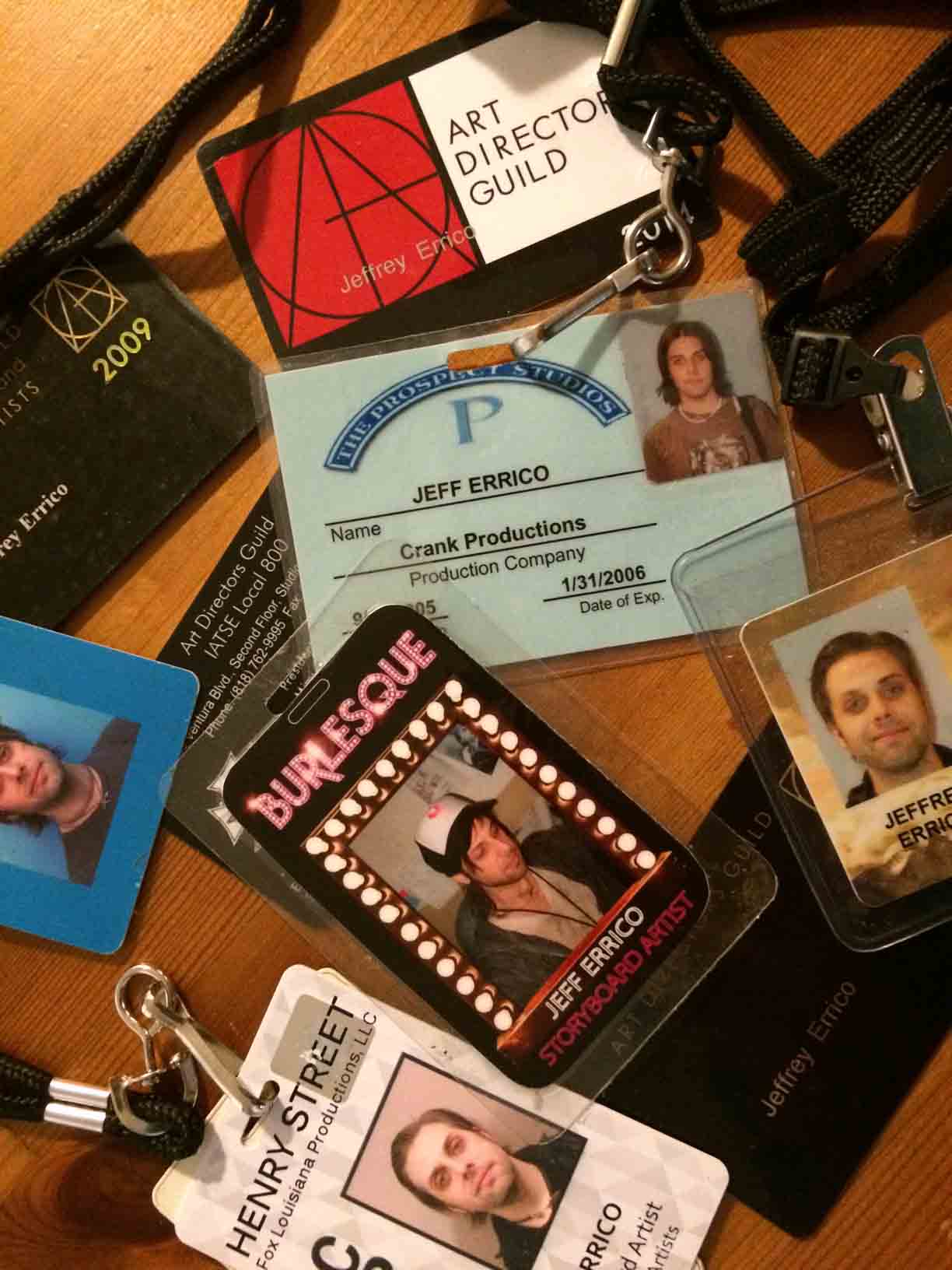
While I feel most people have a general understanding of what a Storyboard Artist is, what are a few things you don’t think folks realize that go into doing what you do? For instance, who do you typically work with on a given production, the director, the Production Designer? How many “bosses” would you say you have when you get hired on to a project? On that note, when are you typically brought in and are you on for the duration of the shoot?
Well, I can't speak for every storyboard artist out there, but it's been my experience, when I first started out wanting to be a storyboard artist, I thought if I’m working on big Hollywood movies, then I must be getting big Hollywood studio treatment, my own office, name on the door, invited to movie premieres, every one knows my name and that I was responsible for helping create "that scene"... No... That is not the case. The reality is you start out cutting your teeth on commercials for a long time, gaining experience, with a wide variety of people. One thing aspiring storyboard artists should know is this line of work is a freelance. Unless you work in animation and are staff, you are living from paycheck to paycheck, and you have to INVOICE clients who can take up to 3 months to pay you which can be stressful, unless you’re union. You then have to get into the Union *(LOCAL 800/ Art directors guild) before you can even work on a big budget feature (but that's another story).* It took me four years just to do that, but after your in the union now your eligible to work on Hollywood features.
Fast forward to you actually having a job, the conditions can vary greatly pending the job, the budget, if it’s shot in town or not. In general for the most part, you are either working from home, (no fancy office) or you are working in the production office if they have room/a desk for you. As for who I work with/under that also can vary greatly pending the type of project based on some of the factors I mentioned above. However in general it's been my experience that I will work with the director, the DP, the AD, and stunt coordinator to various lengths and degrees depending on the type of project. However for the most part my main boss would be the director and it’s their Vision you want to honor. That said, it’s more common than not to be taking questions from the people mentioned above. For the most part storyboard artists generally are brought on during Pre-Production. However some times you are brought on after filming has happened and they have Re-Shoots. My job rarely goes the length of production as my job is done by the time they start filming, since it was my job to help create that sequence BEFORE they shot it. If they do keep you on during production the project is probably undergoing re-writes.
What are some of the things you enjoy most about what you do? The control? The hours? The level of fulfillment you get from putting your spin on an idea? Flip side, what are some of the more annoying aspects of your job? I can imagine redrawing an image over and over might get real old real quick, but what else would you say are things most folks won’t think about when they picture your job?
I would say the coolest stuff that I enjoy is designing the shot, creating the sequence, and then having the Director say “WOW. Yeah that’s great!!! Let’s do that” and you see it on screen, other fun perks are meeting some of the talent on the film, being on set, experiencing that moment, and getting free lunch. Those are probably the coolest parts. As far as annoying aspects of working on FILM - that can vary from doing constant revisions on one specific scene, to the production being shut down, to having your meeting with the director constantly be "pushed” and having to constantly squat at a desk only to have to be moved three or four times because someone more important is starting that week so your stuck in the back somewhere with broke down old chairs and clunky furniture in a cramped office space.
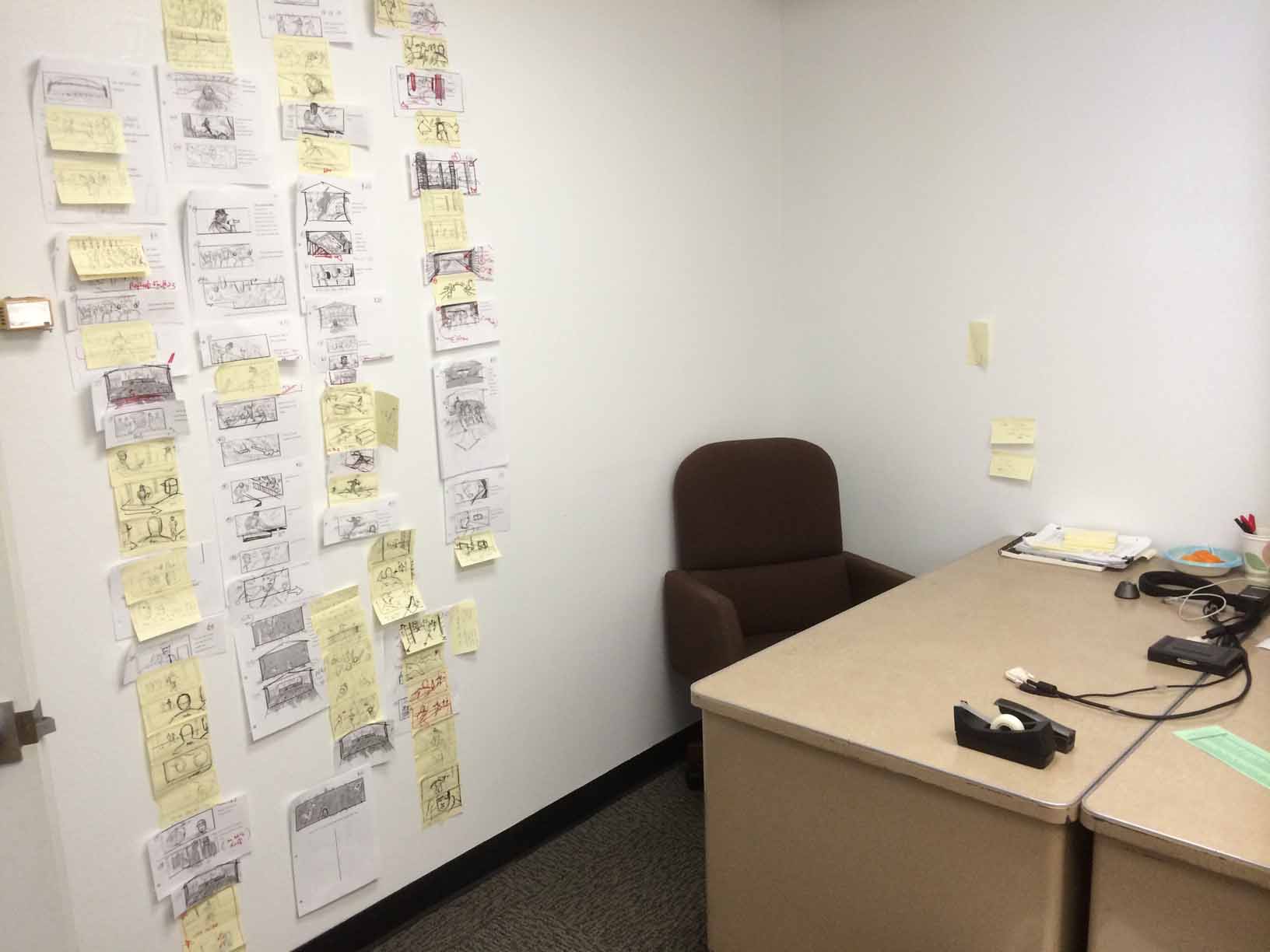
Are you a lone wolf or do you typically have assistants or colorists? Do you prefer it one way over another?
It’s been my experience that I do not have any assistants or colorists. Pending the scope of the project they're might be 2, 3, 4, or 5 storyboard artists if it is a big budget movie. Usually on the big budget films like, SNOW WHITE or TERMINATOR, they have a VFX person (IT Tech guy) that keeps our storyboards in an organized manner for the VFX/ Pre-Viz team with dates, scene numbers, etc… But I personally never have any direct assistants or anything of the sorts. If I'm working from home then definitely a lone wolf, and if working on a big production then they usually put all the board artists in one room together.
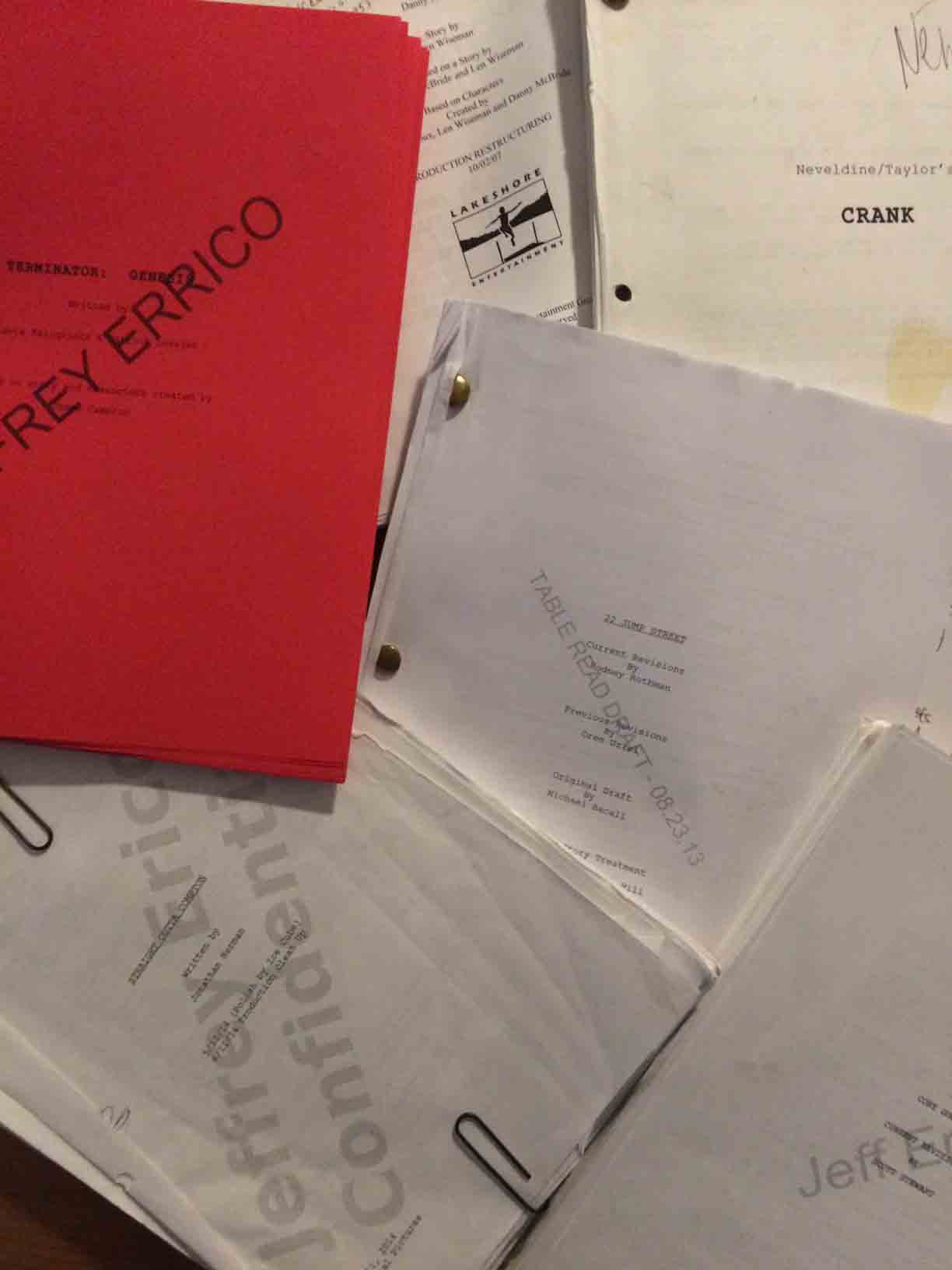
What type of schooling did you have, if any? Did you go to art school, film school, or anything like that? Would you suggest aspiring storyboard artists go to school or just jump right in and learn from experience?
This is a catch 22, there's no wrong or right way to do this, but I went to the SCHOOL OF VISUAL ARTS in New York City, and received a B.F.A. in animation. I was asked once in 10yrs “did I go to school?” and “Where?” for a job. Half the time they don't even check your website if you are simply referred. They just pull up your IMDB page to see what credits you worked on... then if they are interested from there - they look at your work. That said, I would not have learned about storyboarding had I not gone to college. College is about the experience and the friends you make during that time. Once you land in Hollywood it’s all about persistence and nepotism. You can be bad artist and get storyboard work, however if you want to work with the best, you are going to have to be best, because James Cameron and Steven Spielberg are only going to want to WORK with the best, not the guy who is OK. What they don't teach you in school is the life experience stuff. *(what to do if two jobs call for you the same day, how much do you charge, how fast should you be, what to have in a portfolio, etc…)* There is SOOOOO MUCH they don't teach you in school about being a storyboard artist, so I've actually created a Three Day Workshop that I will be doing once a month here in LA entitled: DESIGN THE SHOT. It’s a crash course in storyboarding for live action. I go over all the stuff they don’t teach you in school that I had to learn on my own. Things like working with Pre-Viz, working on commercials vs. film, the business end, and portfolio aspects. There's so much stuff that you just don't know until you are in the field.
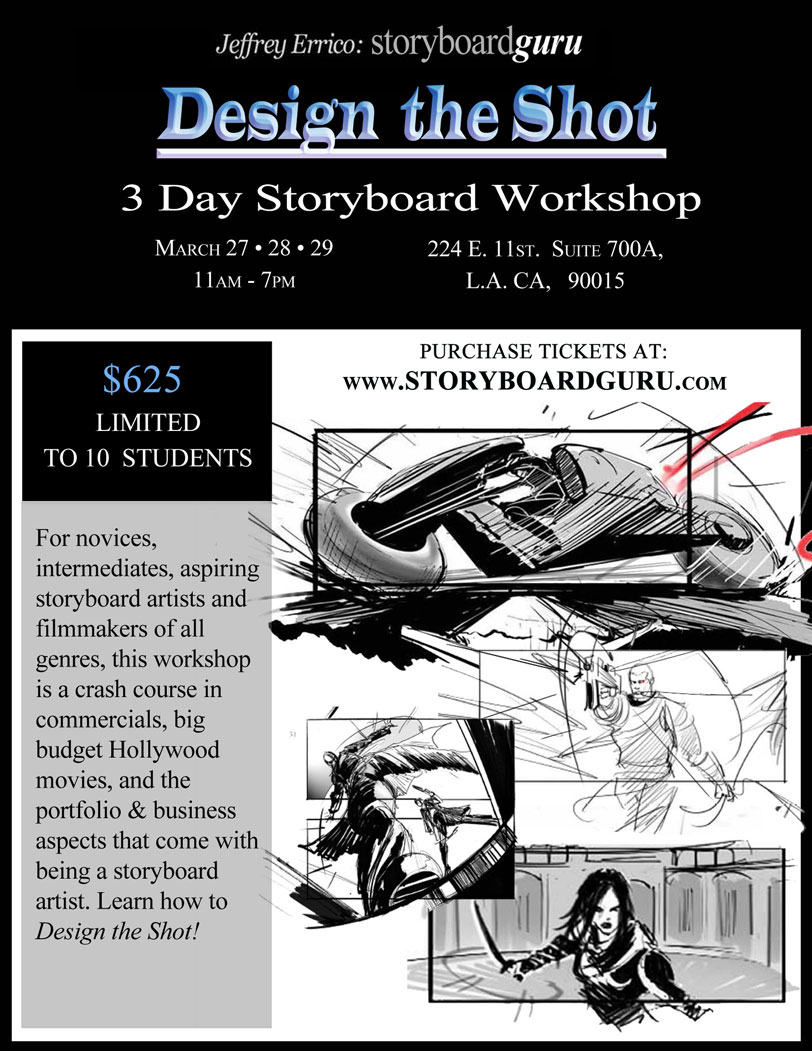
What led you to being a storyboard artist? Can you tell us a little bit about what brought you to where you are right now? You might have touched a bit on this in the previous answer, but I’m just curious about your first few years in “the industry” where like and how you’ve moved on to bigger and better (arguably) opportunities.
I was a comic book junkie growing up on Long Island, and was a huge fan of Dark Horse Comics and was always drawing, coping the images of THE MASK, CONCRETE, ALIENS, PREDATOR, etc... My dad would always take my sister and me to the movies when we were kids, so I grew up on comics and movies of the 80's and 90's and I was always - always - always drawing as kid, throughout my life well into adolescence. Originally I thought I was going to be a comic book artist, but it was suggested to me to go into animation, as TOY STORY was all the rage at the time. So I did, and I discovered storyboarding while at SVA. This was also right around the time that DVD's were coming out with special features and one of those main features happened to be "Storyboards." I saw the JURASSIC PARK storyboards and thought – “YES, I want to draw storyboards!!!” I thought it was pretty much comic books for movies, except with better pay and the prestige of working on the movie. I had storyboarded an indie film for some friends in Brooklyn which never got made, but those friends had some friends in Marina Del Rey who were making their indie feature, coincidentally the week I happened to be graduating. So that week I had graduated on a Monday and was on plane to LA on Wednesday with nothing but three suitcases. I worked on that indie film, took those boards to a storyboard agency and they repped me, and started to get me consistent work on commercials. One thing led to another and eventually more commercials led to bigger better commercials, then to TV, then to getting in the Union, then to Big Hollywood films. That said, the first two years of freelance storyboarding were the toughest, but after 4 years of hustle I had finally achieved my goal of becoming a union storyboard artist. Fast-forward to now, it has been 10 years, and I feel I've really only come into my own over the past year or two. My style and process has changed a bit since I first started ten years ago. The KEY ingredient is PERSISTENCE. If you hang in there long enough and work hard enough things will develop and people will take notice.
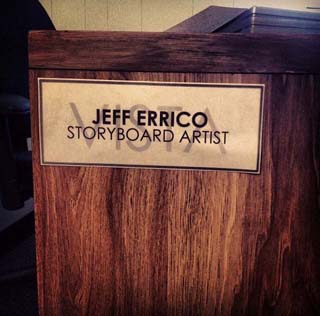
Were there any individuals in particular who helped you with that first ‘big break?”
Yes! Kasra Farahani and Adolfo Martinez Perez! If you are not familiar with them check out their websites. Kasra is an amazing illustrator, concept artist and production designer, and he got me my first what I consider “real movie” job on film entitled "Lies & Alibi's". Definitely one of the best experiences of my life. But it was Adolfo who took me under his wing and really taught me how to be great storyboard artist and taught me how to DESIGN THE SHOT, and put your stamp on a scene. Adolfo is an amazing director too and has done some great short films, and won numerous awards, and he is one of the nicest guys I know.
I ask everyone this, but is there a shot/sequence/moment that you can point to and say “It’s that way because I was there and had it been anyone else, it would have been different.” I feel with your level of creativity and involvement with a project’s style, this might be too broad, but if you had to pick ONE sequence that really means something to you, perhaps it was really difficult or incredibly enjoyable… what was it?
That's a tricky one... There definitely are some moments/sequences I'm proud of that never made it into the movie... but There is a sequence in TERMINATOR:GENISYS that I designed that I know if it wasn't for my creative input, it would of went another way. *(Granted I haven't seen the finished film so I'm not a 100% sure my sequence is as I designed it but I guess I’ll find out July 1st.) That said, I know for a fact there would have been no Lamborghini in 22 JUMP STREET if I had not suggested it. My original pitch to Lord & Miller was the idea to have Jonah in a car chase in the Lambo and have him crash it into a boat as he jumps out the Lambo and into the hotel, but I think they had to change that due to budget, and logistics. The opening sequence of NWA has some camera beats / shots / moments that I helped with, but the thing storyboard artists have to remember is that in my experience it is never the EXACT shot you draw that they film. That does happen, but your storyboards are generally a blueprint, or a road map for the crew to discuss logistics. “Oh, we need CG Background in that shot, rubber glass, and lets make it 10 cops and 2 helicopters instead of 50 cops and 10 choppers.“ That said, I really enjoyed working on the HELLHOLE sequence for Seth & Evan on THIS IS THE END and an entire chase sequence with Adolfo on THIS MEANS WAR that never made the cut.
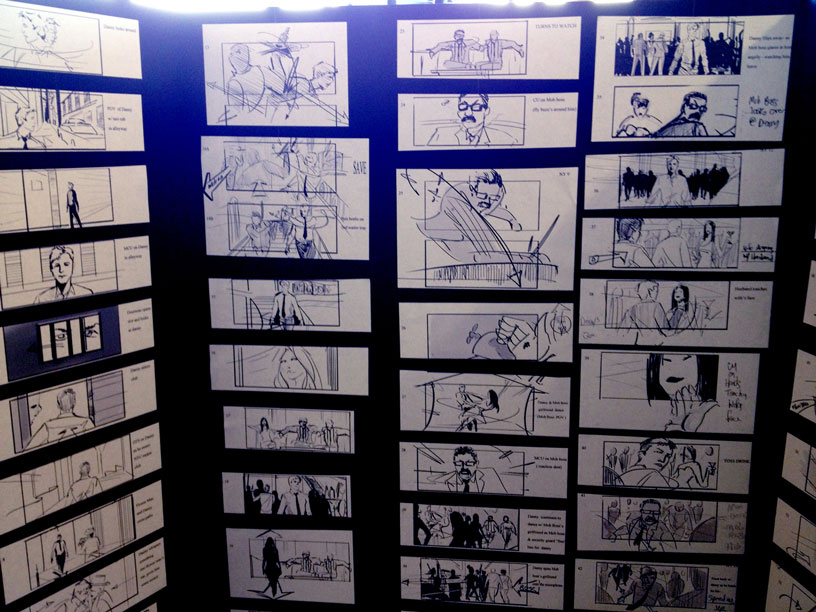
What’s a typical day in your world like while you’re working?
This can vary depending on the project, but in general after I met with the director and/or powers that be, and have been given my assigned scene, I'll review my notes, references, and I will re-read my scene in the script and break it down into sections. I start thumb-nailing out the shots on post-its and put them up on the wall, so I can "DESIGN THE SHOT" and see how the scene is taking shape and make adjustments as needed. I’ll do that in four hour blocks - take a lunch - then review the scene and keep moving till that sequence is completed. After a first pass I'll send a PDF to the director and wait for notes/revisions and move forward from there. Once it has been blessed by the powers that be, clean them up digitally if desired by the director.
You’ve worked on quite a few recent “big” movies like 22 JUMP STREET, FANTASTIC FOUR, THIS IS THE END, and others – as well as TUCKER AND DALE VS. EVIL (one of my favorites!), if you had to choose, out of your entire career – which three films would you say represent you the best and why?
Definitely CRANK, as I probably could of been in that movie, at the time in my life, given my crazy schedule. It was my first real BIG BUDGET action movie that I worked on where I got to draw all the cool stuff I grew up watching: shoot outs, car chases, helicopter chases, gratuitous sex & violence!! It was my ROBOCOP! BURLESQUE was also great. That was definitely one of the best experiences of my life. Getting to draw hot, half naked dancing girls in burlesque outfits for six months was not a bad job - not to mention I got to do all these amazing life drawings of Christina, Cher, Alan Cummings, and all the dancers on set in their costumes for months. I even made an art book for the director and some of the crew with the drawings of cast and crew. THIS IS THE END was also a great experience. Seth and Evan are awesome and were so cool to work with. I loved my job every day on that gig. Those are probably the 3 films I worked on that hold the fondest memories for me.
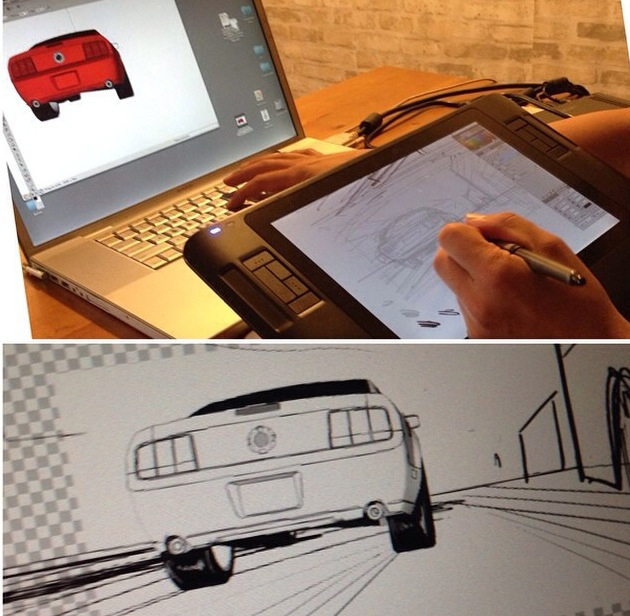
Let’s say Jeff Errico quit tomorrow – no more drawing storyboards at all – what do you see yourself doing with your life? Or, if you weren’t a storyboard artist, what profession seems more your speed?
Maybe a psychologist, or dancer, or fine artist. I'm always interested in the psychology of the brain, and how and why people make the decisions that they do. I also love dancing, and went to a lot of DJ shows, but to get paid to stretch and be on Broadway always seemed cool. But I love art, and even when I’m not storyboarding I’m still drawing. I’m actually looking to get my Masters and find my footing in the gallery world. I love drawing from life, so If anyone is interested in checking out my fine art, just go www.jeffreyerrico.com.
To wrap up, do you have any advice for aspiring filmmakers out there in the AICN audience? It can be towards novice storyboard artists, filmmakers, or anyone really. What are some things you’d suggest every potential director (at any budget level) think about when it comes to storyboarding or working with a storyboard artist?
This is just my opinion, but for the Storyboards Artists out there - it's important to know that storyboarding for animation is different than storyboarding for film, and storyboarding for commercials is different than storyboarding for film. Know that the bigger the film project you work on, the less time you get with the director. Know this, storyboarding is not about pretty drawings, it’s about communicating your SHOTS in a clear concise way for people who don’t understand scribble. Know that "DRAWING " a storyboard is only one aspect - you need to know perspective too. Take a scene from a movie and storyboard it out, shot for shot, then do it again but put your own riff on it. This will help you better understand perspective and how a camera moves, and how to communicate that in a 3x5 film ratio box. There’s no wrong or right way to storyboard. Know how to use a cintique, but don't think just because you are digital that you are a professional yet. That takes time and experience. Be familiar with camera moves and terms. Make sure you have a website that is clean and simple, with your phone and email easily accessible. Don't be afraid to ask a question if you are unsure about what the director is referencing. Don't be afraid to bring action figures and hot wheels to a meeting. Take notes, and be early for every meeting. Do not talk smack about what films you hate in a production office, chances are someone in that office worked on that show. Be respectful of everyone from the P.A. to the CEO.
It’s been my experience that different directors use storyboards for different reasons. I've noticed the lower budget films tend to stay pretty close to the shots storyboarded *(like TUCKER AND DALE) because they are on a strict schedule with a tight budget and they don’t have time to "find the shot on the day". The bigger budget films like SNOW WHITE, 22 JUMP STREET, and TERMINATOR usually just have you "take a crack at it," so they can see what’s on the page - to see if the scene is working or not, and where the plot holes are. Some use storyboards as road maps of sorts for schedule/budget reasons, some for logistical reasons, like “Make it 10 cops not 20… 2 cop cars, not 10… “ Others just don’t know what they want until they see it and that helps them figure out what they DO want. The more clear a director is about their vision, the more reference they have for me to view, the better I can create that vision for them.
Lastly, what are you currently working on?
I just did two weeks on an AMC Pilot for David Dobkin called INTO THE BADLANDS. It’s “KUNG FU meets steam punk.” Very cool violent stuff. I’m also teaching a 3 Day Storyboard Workshop in Los Angeles. March 27,28,29th. entitled: DESIGN THE SHOT. It teaches aspiring filmmakers and storyboard artists all the stuff they don’t teach in school, including business and portfolio aspects. The syllabus, details and tickets are available on my website below. It’s a great crash course for those that are interested in storyboarding. I also offer private tutoring too as well. Thanks for looking! See you at the movies!
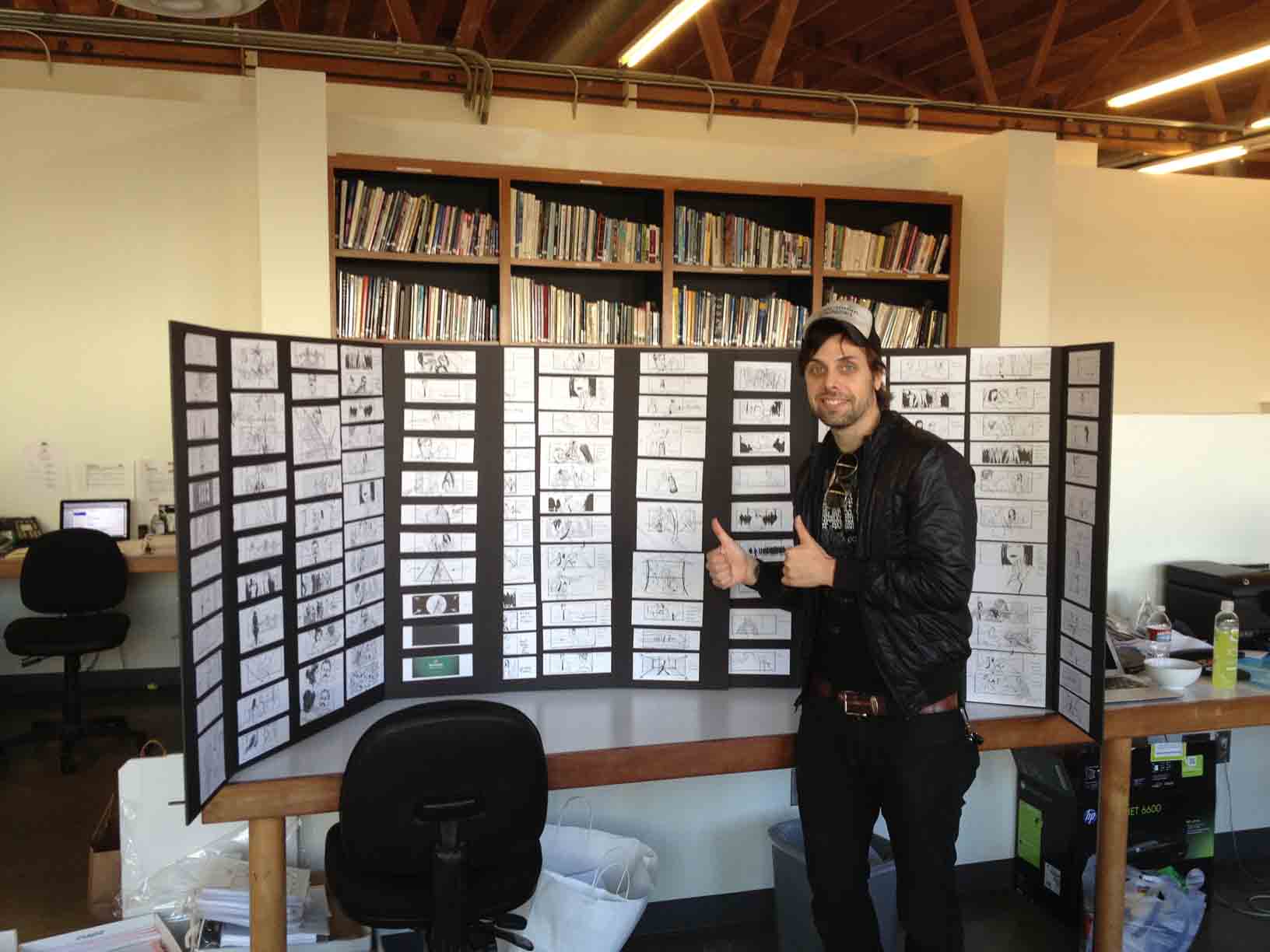
Bam! There we have it ladies and gentlemen - a little dip into the world of a Storyboard Artist. I'd like to thank Jeff once again for taking the time to shed some light on his workflow, experiences, and over all information that I found pretty interesting. His is a unique perspective and interesting to see how either incredibly crucial he is to a film or (paraphrasing his words here) one of many on a given scene/project. At any rate, if you're interested in more info on Jeff or feel like checking out his workshop, then click away here and here for more info!
If you work in production, in any aspect (truly!) and would be cool enough to give us film fans a glimpse into the innerworkings of your world, please shoot me an email at Mike@aintitcool with the subject line: "MTC - (Your Name) - (Your Position)"
This column is relatively new and while I'd love it to be an "every Sunday" kind of thing, it all depends on who is willing to chat with me. The more folks I can talk to, the more consistant I can make MTC. Hopefully you ladies and gents got a kick out of today's highlight. I'll see you fine folks later. (Now go out and make something awesome or check out some films on SATURDAY SHORTS!) Be sure to check out past articles:
Robby Baumgartner - Director of Photography
Thomas S. Hammock - Production Designer
Seamus Tierney - Cinematographer
Brian McQuery - 1st Assistant Director
Shannon Shea - Creature/VFX Supervisor
- Mike McCutchen
"Muldoon"
Mike@aintitcool.com
![]()
